Pyramids, diamond mines and safaris through the Serengeti, just a few things that come to mind when we think of Africa. And somewhere, near the bottom of a very long list, we might encounter bamboo. But Africa, a continent shrouded in mystery, is actually home to a surprising abundance of the miracle grass, bamboo.
After Asia and South America, Africa is the third richest continent in terms of bamboo species. Bamboo is common in most of sub-Saharan Africa, from Ethiopia all the way down to South Africa and Madagascar. The continent is home to at least four genera of native, tropical, clumping bamboo, including Cathariostachys, Cephalostachyum, Oxytenanthera and Schizostachyum; and a handful of temperate bamboos, belonging to Bergbambos, Oldeania, Thamnocalamus and Yushania. Other varieties of bamboo are also cultivated commercially in Africa. It’s a resilient crop, as well as a sustainable and affordable alternative for building materials in developing countries.
In the following article — first published in December 2020 and most recently updated in January 2025 — we’ll take a closer look at which bamboo varieties grow in which parts of Africa. We’ll also talk about some of the ways in which Africans are cultivating bamboo as a cash crop, a carbon sink, and a renewable building material. The tropic and subtropic regions of the continent are ideal for growing bamboo, and in these less industrial parts of the world, it provides an economical and ecological means of subsistence.
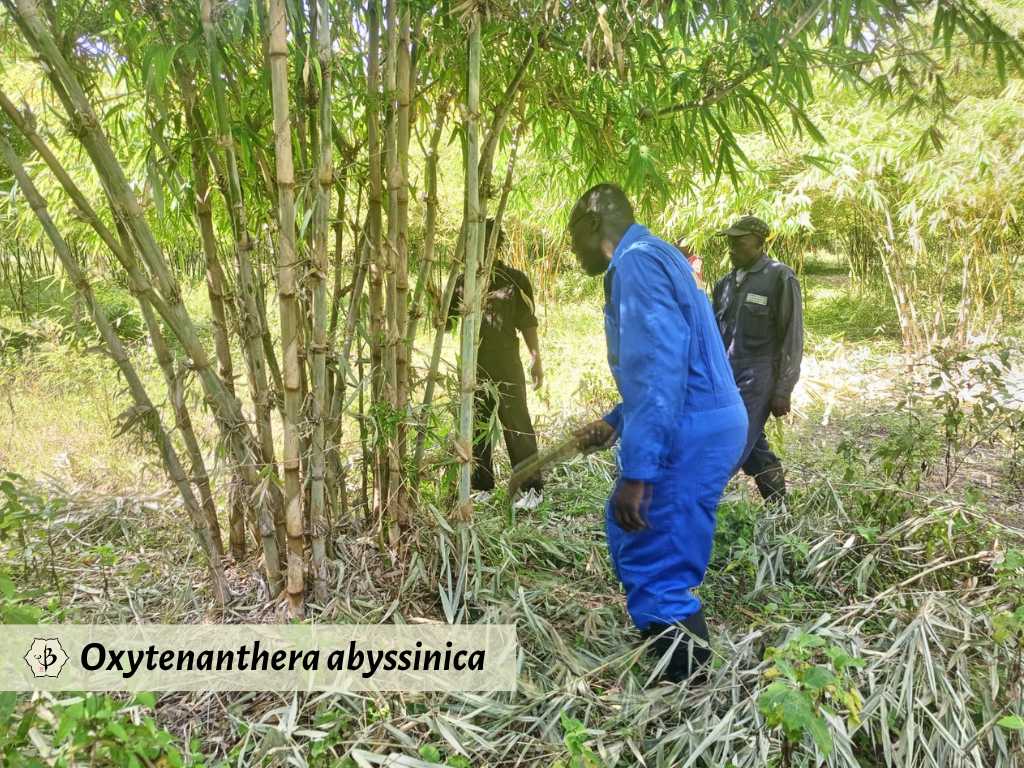
Bamboo native to Africa
Despite whatever preconceptions you might have about where in the world bamboo grows, there’s actually an enormous diversity of species within this subfamily of grasses. You can find bamboo growing in tropical jungles of the Amazon, the cool slopes of the Himalayas, and the wetlands of America’s Deep South. Of course, it also flourishes throughout China and Japan.
No surprise then that the vast and verdant continent of Africa would be home to a plethora of bamboo varieties. The tropical rainforests and subtropical savannas actually offer an ideal setting for these vigorous grasses. And Ethiopia is home to the lion’s share, about two-thirds of the continent’s indigenous bamboo.
| Genus | Tribe | Habit | Distribution |
| Bergbambos | Arundinarieae (temperate) | clumping | Southern Africa, mountains |
| Cathariostachys | Bambuseae (tropical) | clumping | Madagascar |
| Cephalostachyum | Bambuseae (tropical) | clumping | Madagascar, Asia |
| Oldeania | Arundinarieae (temperate) | clumping | Tropical Africa |
| Oxytenanthera | Bambuseae (tropical) | clumping | sub-Saharan savannas |
| Schizostachyum | Bambuseae (tropical) | clumping | Madagascar, Asia, Papuasia |
| Thamnocalamus | Arundinarieae (temperate) | clumping | S. Africa highlands, Asia |
| Yushania | Arundinarieae (temperate) | running | E. Africa highlands, Asia |
Classification of clumping bamboo
As a general rule, most of the tropical and subtropical bamboo species tend to have a clumping growth habit. These are in the Bambuseae tribe. Running bamboos spread more vigorously and are typically native to more temperate climates, like central China and Japan. They belong to the Arundinarieae tribe. But there are a number of exceptions in central Asia, especially around the Himalayas. And Africa also has its share of anomalies, classified as Arundinarieae but with compact, clumping rhizomes.
Most of the native bamboo on the continent are tropical clumpers, belonging to one of three genera. But a few other genera, with less speciation, include an assortment of temperate clumping bamboo varieties, widespread in the highlands of East Africa and South Africa.
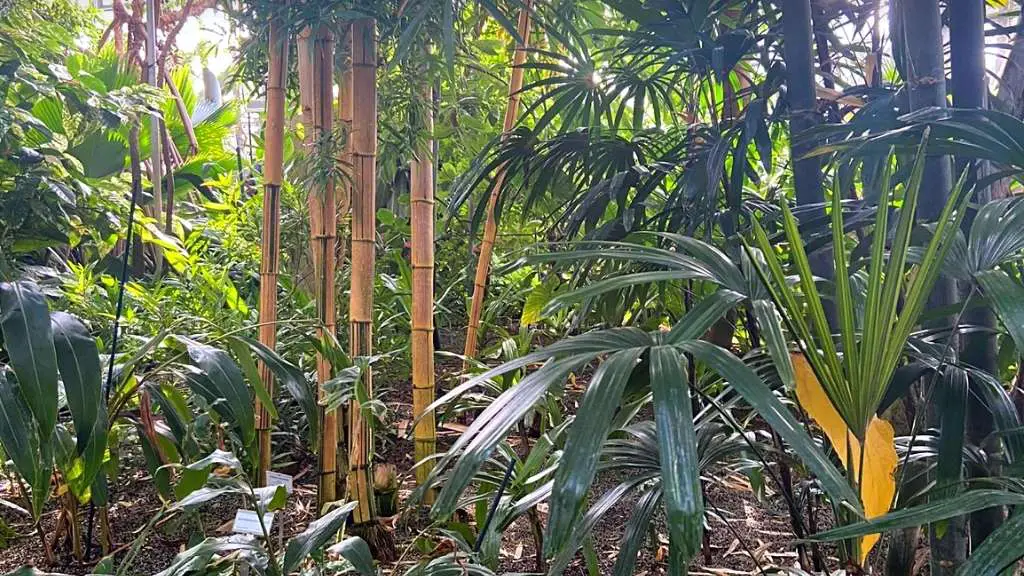
Common Bamboo
Bambusa vulgaris, or common bamboo, is particularly widespread in sub-Saharan Africa, but it’s hard to say if it’s truly native to the continent. Many believe that it originated in southern China and spread across the globe with the help of sailors, botanists and explorers. In any case, it is a prolific species and a useful one. It is frequently propagated and cultivated for its usefulness as a construction material.
This species has a variety of cultivars, including some bright, golden ornamental species with remarkable striping. The African varieties, however, tend to be dark green in appearance. They can grow to about 50 feet tall and 3 to 4 inches in diameter.
Tropical bamboos of Africa and Madagascar
The island of Madagascar is home to some of the most interesting plant and animal life in the world. The only two species of the genus Cathariostachys grow nowhere else. C. madagascariense, or giant Madagascar bamboo, is especially interesting, growing in forests at 2-3000 feet in altitude. The stalks and foliage make up the primary diet of the bamboo lemur (Hapalemur), another genus unique to the tropical island. Unfortunately, deforestation related to slash-and-burn farming has driven both the bamboo and the lemur almost to the point of extinction. C. capitata is another bamboo species that thrives on the island.
Cephalostachyum is another genus of small and medium-sized bamboo plants native to the lower mountains of Madagascar and Asia. The genus includes 14 species, 3 of which are exclusive to Madagascar. You are unlikely to find C. chapelieri, C. perrieri, and C. viguieri growing anywhere else.
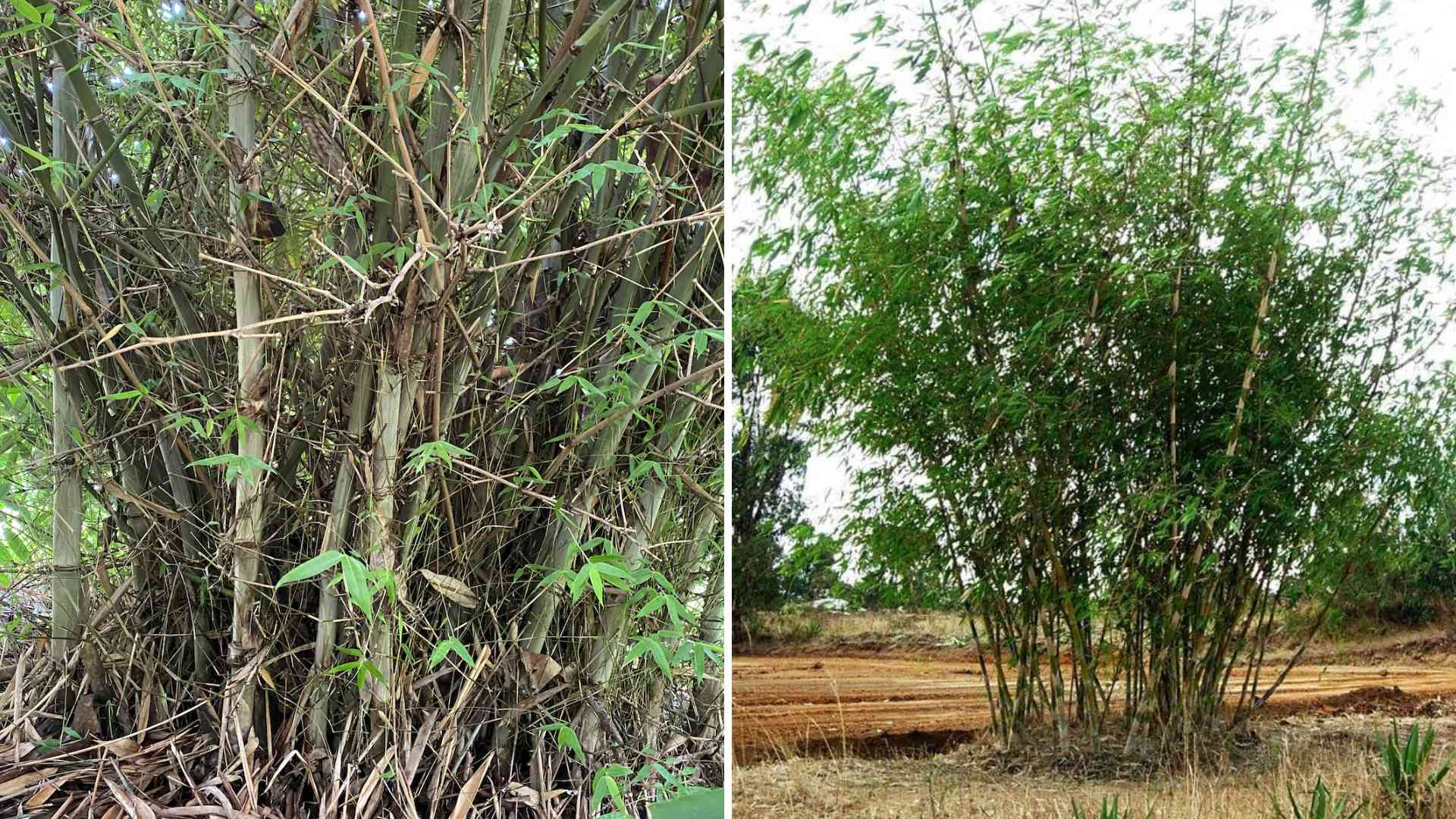
The genus Oxytenanthera probably comprises the most widespread bamboo on the African continent. The primary species of the genus is O. abyssinica, also known as African lowland bamboo or savanna bamboo. This variety also has clumping rhizomes and is classified as a tropical bamboo. Plants can grow 20-30 feet tall with 3-4 inch thick culms. The species takes its name from the land of Ethiopia, which was formerly known as Abyssinia, and where the bamboo is especially prolific. Though classified as tropical, this species is extremely drought-tolerant, growing well in the arid Sahel region on the edge of the Sahara.
There’s another species called Oxytenanthera stocksii. But most experts agree that this species is actually Pseudoxytenanthera stocksii, a bamboo variety native to India and Vietnam.
Schizostachyum is probably the most diverse genus in this directory of African bamboos. But of the 60+ species, only one, S. perrieri, is native to Madagascar. The rest come from tropical Asia, Papua New Guinea, and the Pacific Islands. Schizostachyum brachycladum, from Southeast Asia, is a fairly popular ornamental bamboo in climates that are warm enough, like Florida and Alabama.
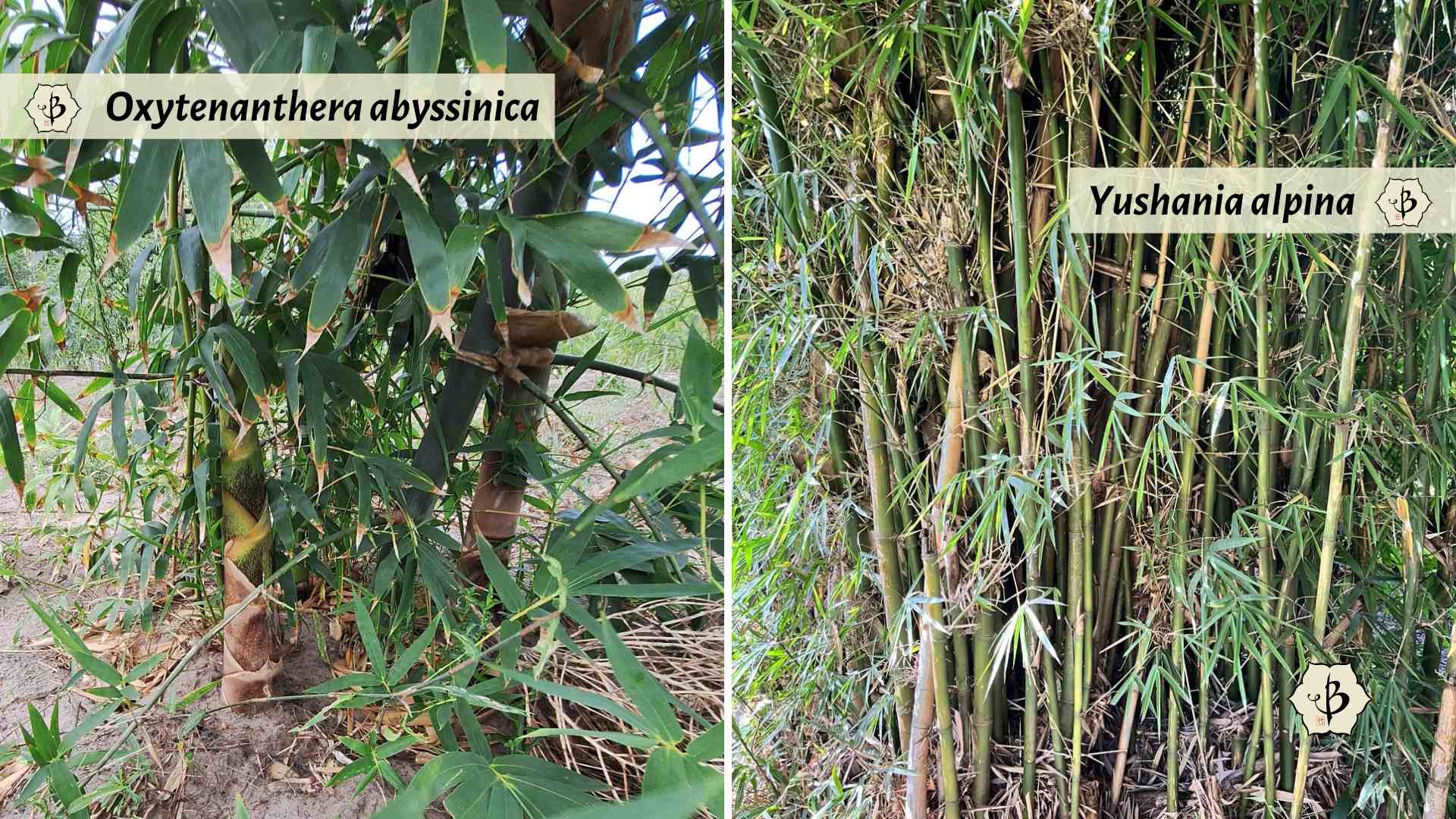
Temperate bamboo of the highlands
The genus Thamnocalamus is one of those botanical anomalies that’s difficult to classify. It has clumping rhizomes, like a tropical bamboo, but generally grows in more temperate climates and high elevations. Most members of this genus come from the lower elevations of the Himalayas, but Thamnocalamus tessellatus grows throughout the mountains of southern Africa. Locally, it is known as Bergbamboes, which translates as Mountain Bamboo. A local mountain range, Bamboesberg, got its name from this prevalent species.
The genus Yushania is another outlier, also predominantly native to the Himalayan foothills, with a loosely clumping root system and a predilection for cooler weather. One species, Yushania alpina, or African Alpine Bamboo, grows in the highlands of the East Africa Rift, around 8-10,000 feet in altitude. Taller than most Asian species of Yushania, this variety can get 50-60 feet tall. Its habitat includes Ethiopia, Kenya, Uganda, Malawi and Congo. It’s an important source of food for the endangered mountain gorilla and golden monkey. Other species of Yushania, including Y. humbertii, have also been reported on Madagascar.

New varieties of African temperate bamboo
The classification of bamboo can be a challenging undertaking. There are currently between 90 and 120 genera, and anywhere from 1,200 to 2,000 species and cultivars. But recent discoveries in Africa point to two new genera of bamboo.
Bergbambos and Oldeania are closely related to, but apparently distinct from Borinda, Fargesia, Thamnocalamus, and Yushania. Like those other genera, they have short, pachymorph (clumping) rhizomes and smooth, thornless culms and branches. But they exhibit subtle differences in their flowers and sheath formations. As for now, the two genera are monotypic, meaning they each only have one species.
Bergbambos tessellata, like Thamnocalamus tessellatus, grows exclusively in the mountains of South Africa, Lesotho and Swaziland. Oldeania alpina can be found throughout tropical Africa, from Cameroon in the west to Ethiopia and Tanzania in the east. Like bamboo in montane China, which feeds the giant panda, this species provides essential sustenance for Africa’s endangered mountain gorilla (Gorilla beringei beringei).
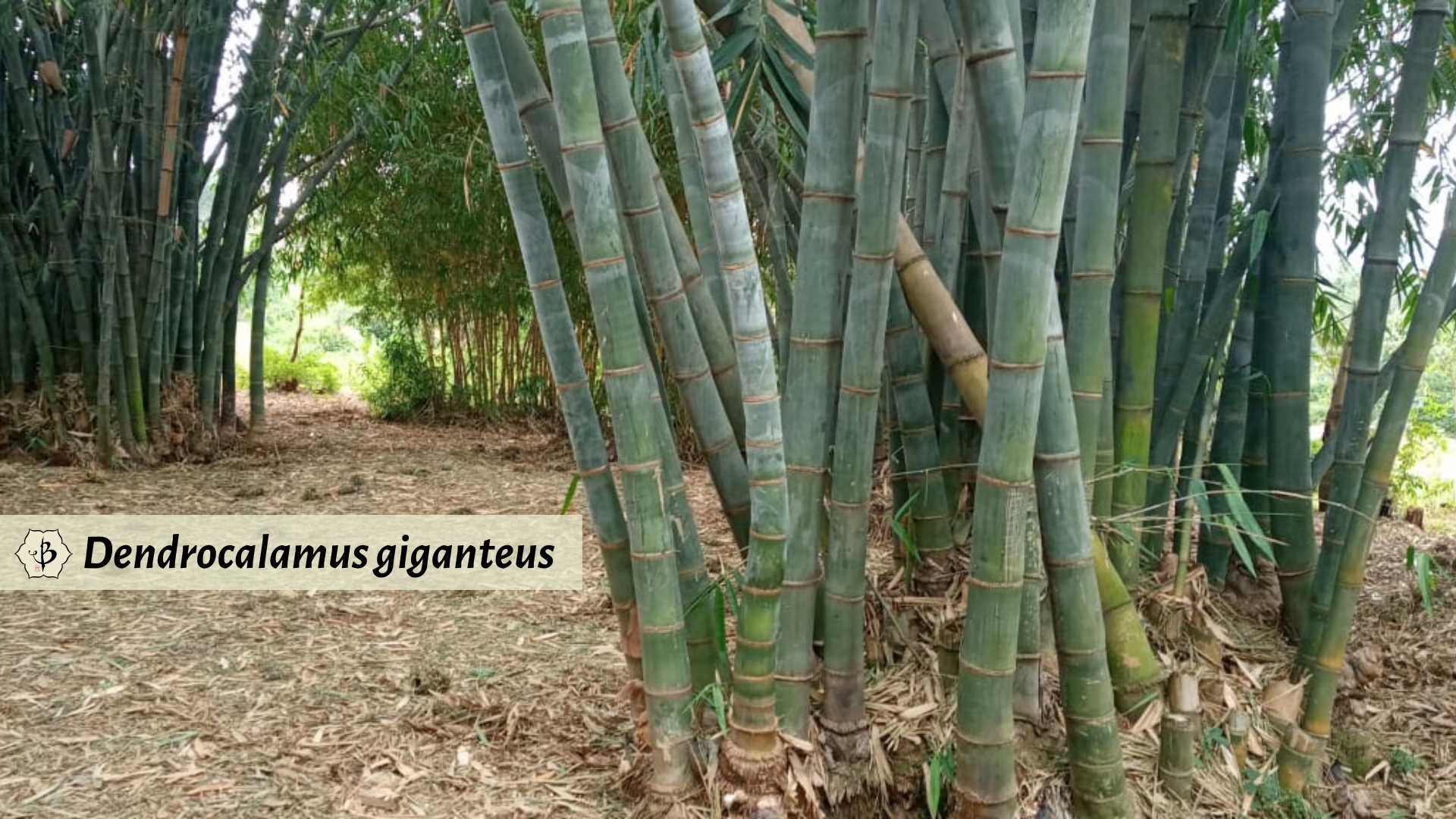
Cultivating bamboo in Africa
With the growing popularity of bamboo and the increasing pressure of climate change, Africa has recently looked to this miracle grass as a crop that can reduce poverty and live up to the highest standards of sustainability. Throughout sub-Saharan Africa, from Ghana to Ethiopia to South Africa to Cameroon, bamboo farming is catching on. International organizations are working with African farmers and entrepreneurs to improve local incomes and global outcomes.
EcoPlanet Bamboo, based in the U.S., is one of the largest bamboo-growing enterprises in the world, with thousands of acres of bamboo in Africa and Central America. They have major plantations in Ghana and South Africa. Their efforts are helping to reduce the deforestation of native habitats and to provide local communities with greater economic opportunities. Additionally, they are working with the African Wildlife Foundation (AWF) to replant Volcanoes National Park in Rwanda with Yushania alpina, vital to the survival of the endangered monkeys and gorillas.
Below are a few of the more noteworthy bamboo projects and activities currently underway on the green continent.
Bamboo in Ethiopia
Believe it or not, Ethiopia — a country more commonly associated with drought and famine — actually has the most bamboo of any African country, covering about one million hectares. Yushania alpina and Oxytenanthera abyssinica both thrive here, in the mountains and lowlands respectively, as they do in most of sub-Saharan Africa.
The Inter-Africa Livelihood Development Program, managed by INBAR (The International Bamboo and Rattan Organization), has promoted bamboo farming and industry in the region, with impressive results. The program has partnered locals from Africa with bamboo experts from China, employing over 1,000 Ethiopians in the bamboo industry. Ethiopians now use bamboo for all manner of crafts and construction, from housing to parasols.
In addition to creating economic opportunities for great numbers of small-scale farmers, bamboo cultivation is also countering deforestation, controlling erosion, providing shade, and protecting watersheds. In this way, bamboo is very effective in reducing the risk of further droughts in the country.
Refer to our article on The status of Ethiopia’s bamboo industry to learn more.
Bamboo in Ghana
The small West African country of Ghana offers excellent habitat for bamboo cultivation, and locals have recently begun to take advantage of that. Alongside indigenous species like Oxytenanthera abyssinica, they have also been cultivating a variety of commercial species, including Dendrocalmus asper and Bambusa balcooa, also called ‘Beema’, a robust tropical bamboo native to India.
The Inter-Africa Livelihood Development Program — active in Ethiopia, Cameroon and Madagascar — has also been instrumental in advancing bamboo cultivation and commerce in Ghana.
Ghana Bamboo Bikes has been one of the country’s most recognized bamboo enterprises. This non-profit company grows its own bamboo and designs its own bikes which they provide to locals at a low cost and also ship to Europe for sale. Proceeds from the sales of bamboo bikes allow them to offset the cost for locals. In this poor region of the world, transportation is scarce or unaffordable. The bamboo bikes give children and young adults a way to get to school and pursue an otherwise unattainable education.
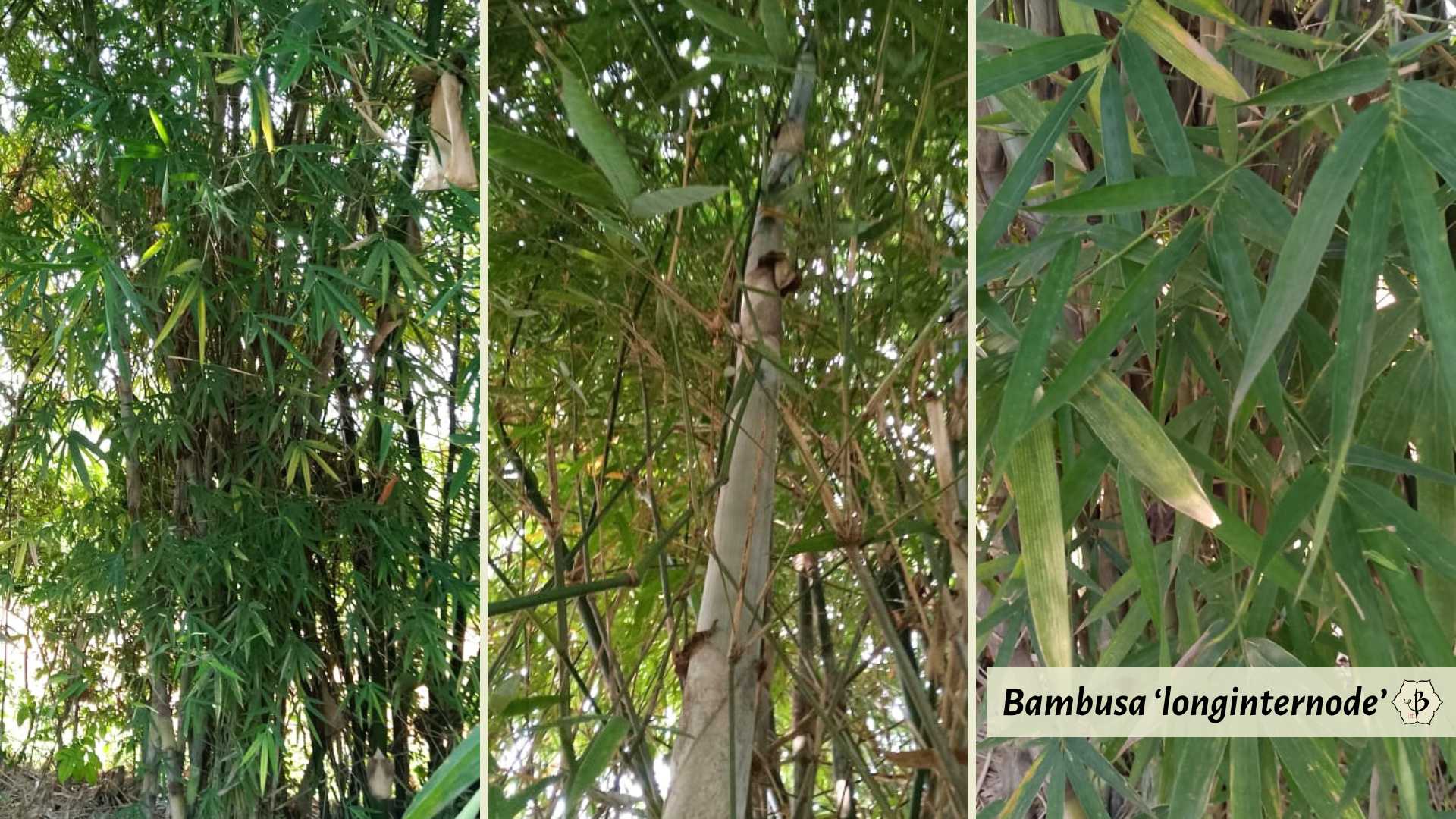
Bamboo in Kenya
Neighboring Ethiopia, Kenya has embarked on some of the most ambitious bamboo cultivation in all of Africa. Government ministries and NGOs are working in cooperation to create a bamboo industry that can be competitive in the global marketplace. With this goal in mind, they are cultivating species like Moso (China’s most economically important bamboo species for lumber and textiles), Bambusa long-internode, Asper, and Dendrocalamus membranaceus (a bushy variety from Southeast Asia).
Bamboo is an excellent and faster-growing substitute for wood, which locals commonly burn for fuel and energy. Kenyans are also using bamboo groves to protect waterways and restore habitats, especially along the Mara and Njoro Rivers.
In September 2020, the government reclassified bamboo from a grass to a crop. This will open the way for even more research and investment in Kenya’s burgeoning bamboo industry.
See our detailed article about Bamboo in Kenya.
Bamboo in Malawi
Landlocked between Zambia and Mozambique along the southwest corner of the Great Rift Valley, Malawi has very little native bamboo. But that hasn’t stopped Jan Oprins and Grant Blumrick from launching Afribam, one of southern Africa’s largest bamboo plantations. Specializing in Dendrocalamus asper, a Southeast Asian species of giant bamboo, Afribam sees bamboo as a crucial tool for addressing many of Malawi’s social and environmental challenges.
Contact us if you need help sourcing bamboo plants in Malawi, Zambia, and this general region.
Malawi is one of the poorest countries in the world, with 90% of the population living on less than $2 a day. It’s also a hot spot for Malaria and expects to see this health problem worsening as climate change brings higher temperatures. And like other tropical regions, the country has seen its own share of deforestation, losing 10% of its forests since 2001.
Bamboo can play a key role in restoring forests and at the same time provide economic opportunity for subsistence farmers. And in the battle against Malaria, Malawians are recognizing the capacity for bamboo groves to soak up the stagnant water that serves as a breeding ground for the disease-carrying mosquitos.
Bamboo in South Africa
With its mild, Mediterranean climate, South Africa has excellent growing conditions for a tremendous variety of plants. Bergbambos and Thamnocalamus are both endemic to the area, but settlers brought Bambusa balcooa to the region in the 17th century and it has since naturalized in the local ecosystem. This Indian timber bamboo is very useful for construction and papermaking, and is a superior variety for commercial farming.
Like anywhere else, the uses for bamboo in South Africa are manifold, and its benefits are abundant. Building material, pulp for paper, edible shoots and livestock feed are among the most popular reasons for cultivating bamboo here. Of course, farmers are also aware of the advantages of growing something that can reduce deforestation and agricultural runoff into the waterways.
More recently, South Africans have been exploring the potential of converting bamboo residue into ethanol for fuel. Bamboo offers a cleaner and more sustainable alternative to corn and sugar cane as a source of biomass fuel.
Bamboo in Uganda
The tropical highlands of Uganda offer another choice habitat for native and cultivated bamboo in Africa. And for the last several years, the local government and the Uganda Bamboo Association have been urging Ugandans to cultivate more bamboo, citing its ecological benefits and its potential for elevating rural economies.
Locally, bamboo is perfect for building and construction material, as well as animal feed. Other practical commodities include bamboo crafts and kitchen wares. With a little more ingenuity, they are also producing bamboo vinegar, which in turn can be made into soaps and cosmetic products. And the bi-products of this vinegar production could be made into biofuel, once the infrastructure for that process is established here.
We’ve written about the Bamboo Village Uganda before, and it’s one of the most exciting projects on the continent. A non-profit organization based in the Netherlands has established a plantation in the Nakasongola district to empower the local community with an opportunity to farm something more profitable and versatile than cassava and bananas. Bamboo is used to build affordable housing and to make crafts for sale.
Moreover, the Bamboo Village is attracting more outside investment by inviting businesses and individuals to purchase plots of bamboo on the plantation as a way of earning carbon credits and offsetting their own greenhouse emissions. As a result, the Ugandans are able to expand their cultivation, employ more people, and build more housing. At the same time, bamboo is controlling erosion and improving the ecosystem.

Does bamboo grow on Mount Kilimanjaro?
Surprisingly, no. Bamboo grows on all the mountains of sub-Saharan Africa, with the glaring exception of Kilimanjaro. Biologists have been working to solve this mystery for more than a century, but the answer continues to elude them. Africa’s tallest and most iconic mountain, Kilimanjaro tops out just shy of 6,000 meters. This is about 800 meters higher than any other African peak. But Kenya and Uganda have nearly a dozen mountains that exceed 4,500 meters, and bamboo grows on all of them.
The alpine bamboo varieties that thrive in Africa seem to do best at around 1,200-1,400 meters, but not on the slopes of Kilimanjaro. Neither on the wet southern side nor the drier northern side. Given the wide array of conditions around the different sides and altitudes of the mountain, a difference in climate cannot adequately explain the absence of bamboo.
One theory, from Dr. Andreas Hemp, postulates that human activity drove the elephants off the mountain, and this is why Kilimanjaro has no bamboo. Giant herbivores like the elephant can clear out patches of forest and create openings where bamboo can get a foothold. They can also dig up rhizome sections and help to propagate the bamboo. Humans began settling the area about 2,000 years ago, and elephants, who once browsed the mountainsides, gradually moved elsewhere. But at this point, scientists are still looking for a more definitive explanation.
Further exploration
To learn more about the astounding varieties of bamboo and its enormous potential around the globe, check out some of these other engaging and informative articles.
- Introducing bamboo: Genus by genus
- Where does bamboo come from?
- Bamboo and reforestation
- Hawaiian bamboo
- South American bamboo
- Bamboo farming in the U.S.
- Bamboo farming in Europe
- Growing bamboo for profit


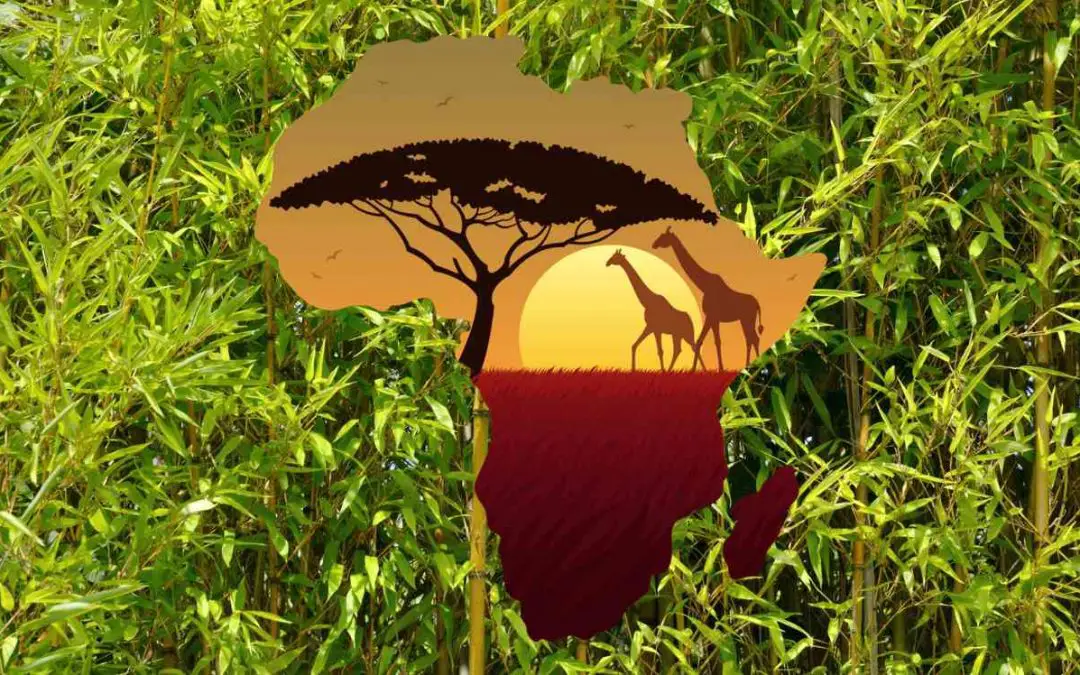
























Very educating one. Thanks